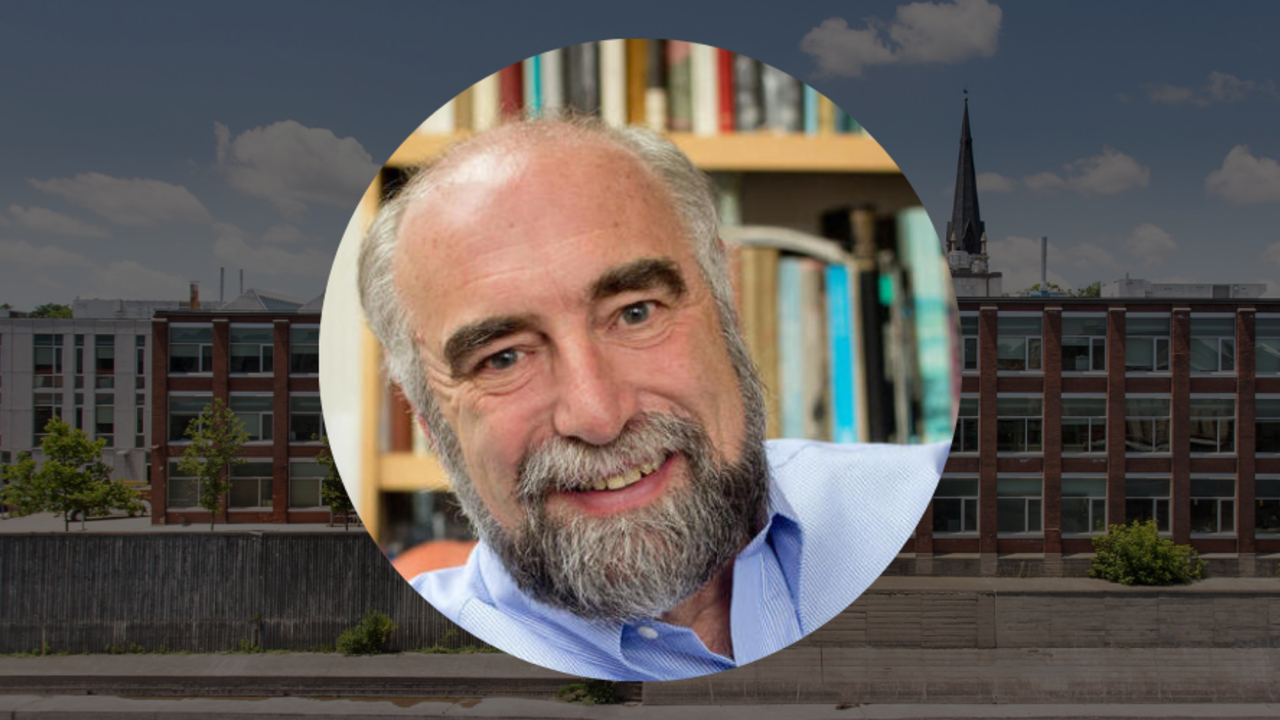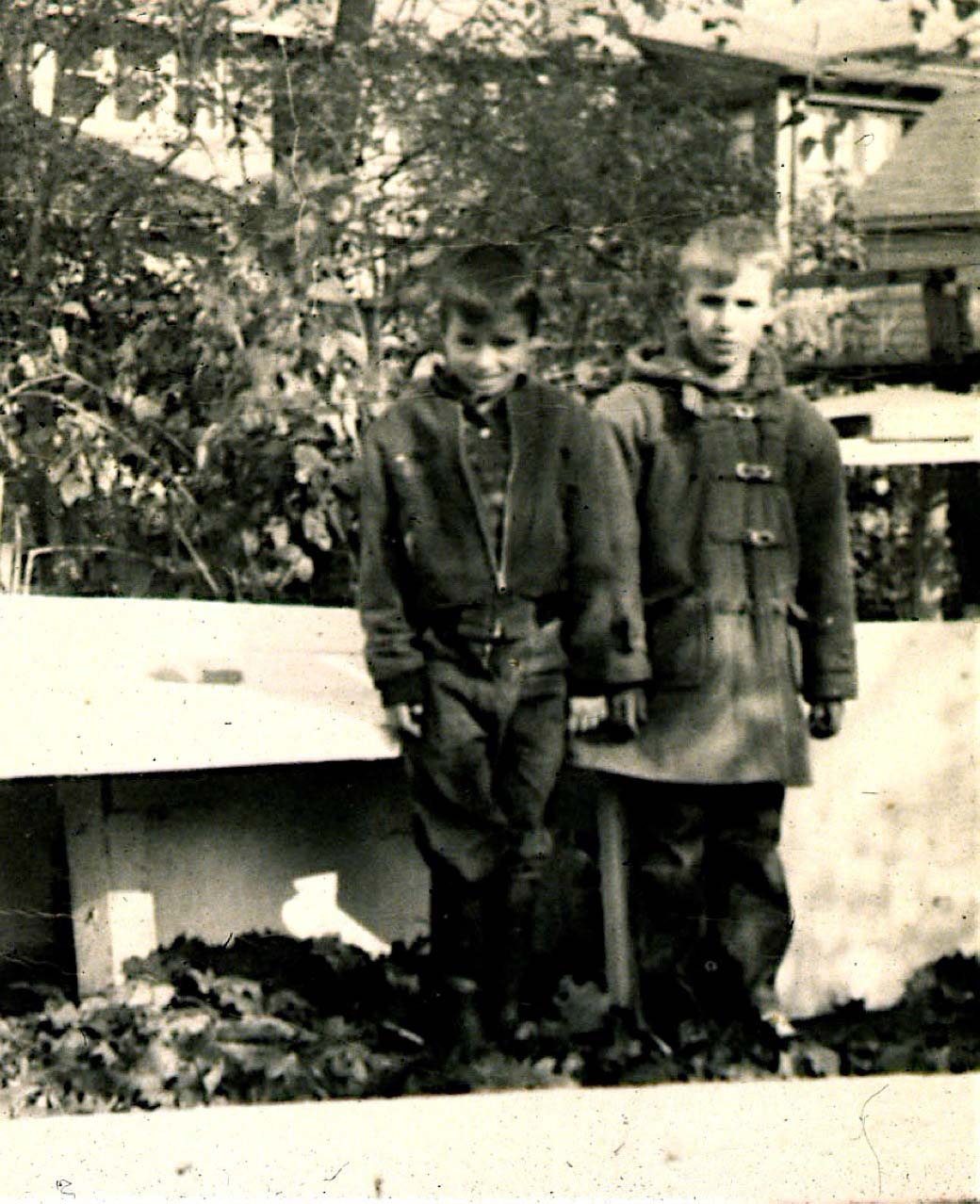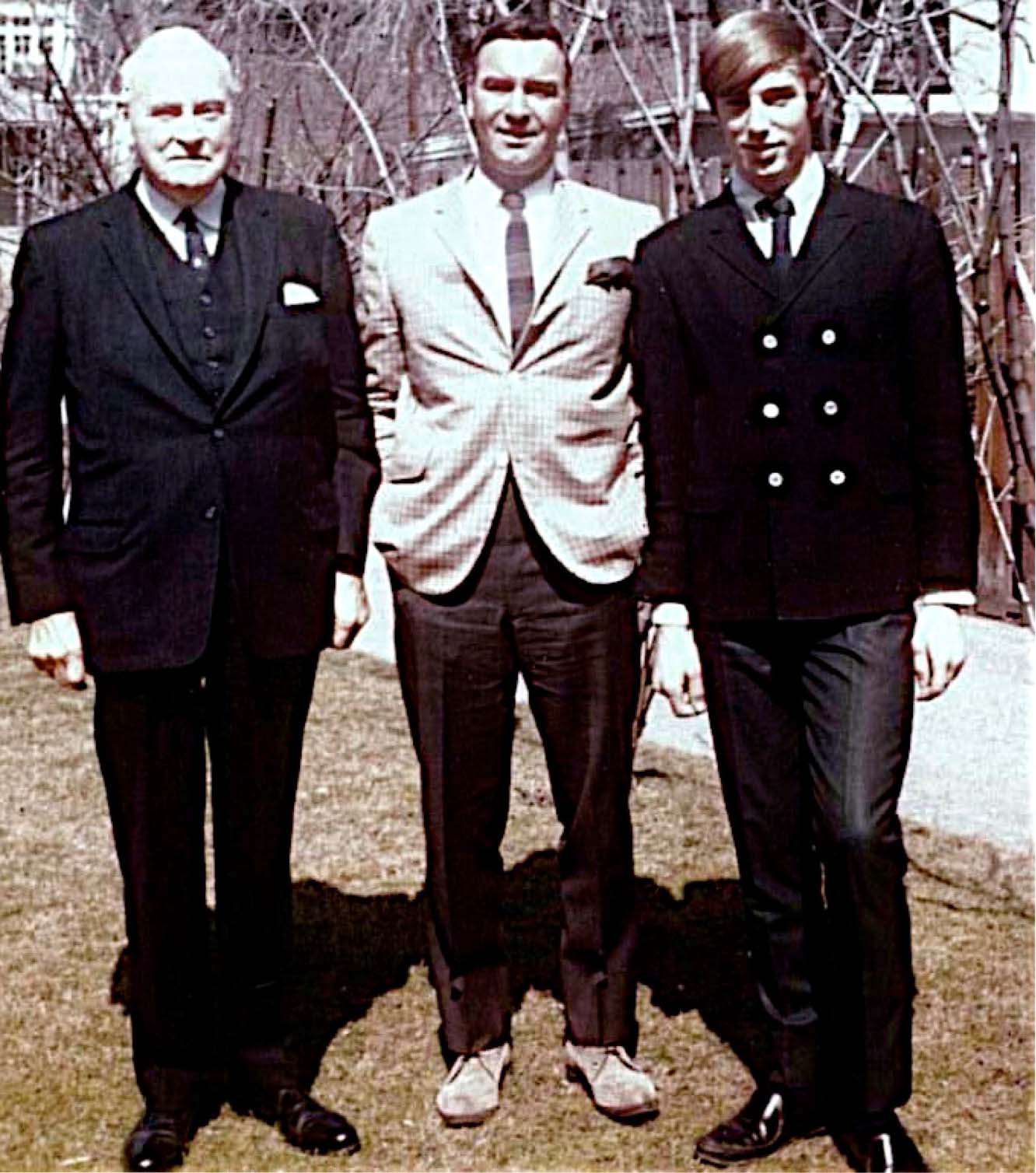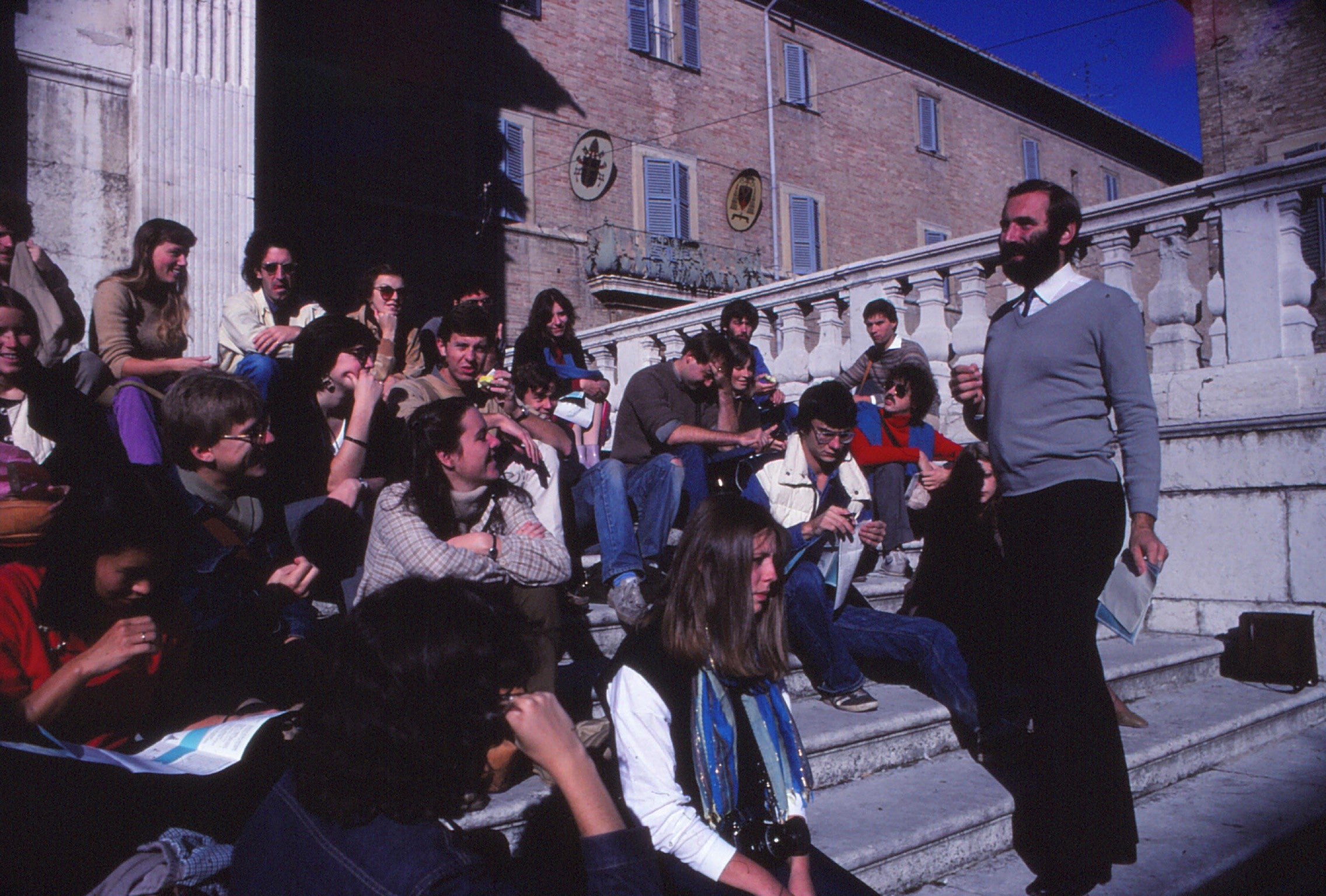
Longtime professor receives Order of Canada honours
Rick Haldenby recognized for his significant architectural contributions

Rick Haldenby recognized for his significant architectural contributions
By Carol Truemner Faculty of EngineeringDeciding at a young age to become an architect, Rick Haldenby was just seven years old when he designed and built a house in the backyard of his Toronto childhood home.
Haldenby used scrap pieces of wood and other recycled materials collected from his neighbours’ trash to complete the structure he now describes as  “looking strangely like a miniature of a Frank Gehry building.”
“looking strangely like a miniature of a Frank Gehry building.”
The next year, he undertook his second attempt at building a backyard house but ended up with a much different result.
“That one looked like a shack,” the Waterloo School of Architecture professor recalls with a laugh.
A young Rick Haldenby, right, and a friend stand in front of the first house he built in his Toronto backyard.
Years after putting his rudimentary architectural skills to work, Haldenby was named to the Order of Canada in recognition of his contributions to the advancement of architectural education in Canada and for his efforts to preserve industrial and mid-century buildings.
He joins his maternal grandfather, Ross Macdonald, in being named to one of the country’s highest honours. Macdonald, who served as a Member of Parliament for Brant, Speaker of the House of Commons of Canada and Lieutenant Governor of Ontario, received the Order of Canada in 1974.
Haldenby’s career choice was inspired by his father and paternal grandfather who were prominent Toronto architects. But while they both attended the University of Toronto, he felt its architecture program wasn’t a good fit for him at the time.
 In the spring of 1969, the Grade 13 student “hitched a ride” from his Toronto home to the University of Waterloo with his father’s colleague who was overseeing the construction of the University Club, then known as the Faculty Club.
In the spring of 1969, the Grade 13 student “hitched a ride” from his Toronto home to the University of Waterloo with his father’s colleague who was overseeing the construction of the University Club, then known as the Faculty Club.
Rick Haldenby, right, with his grandfather, Eric Haldenby, left, and his father, Douglas Haldenby in 1968. They are the only three-generation family to all be named Fellows of the Royal Architectural Institute of Canada.
Haldenby walked to the Engineering 2 building where the School of Architecture was then located and wandered into the director's office without an appointment. After chatting for a few minutes, the director offered Haldenby a spot in the fall’s first-year class.
By the time he returned to the University that September, the school had moved from the Faculty of Engineering to the Faculty of Environment – it rejoined engineering in 2005 – and was housed off campus in a drafty industrial building on Phillip Street in Waterloo.
While the physical program setting itself was hardly conducive to creativity, Haldenby’s passion for architecture grew in the classroom and on co-op terms including one during which he helped build a pulp and paper mill in the north of Sweden.
Shortly after graduating with a BArch in 1975, Haldenby was asked to fill in for an ailing professor and teach a couple of courses.
When the term was up, he left to bike across Europe after deciding teaching wasn't for him. But his colleagues thought otherwise. While on his cycling trip, he received a telegram in Athens asking him to apply for one of three new architecture positions.
Haldenby found someone to type his CV on airmail paper and six months after sending it off he picked up a telegram at an American Express Office with a job offer. He returned to campus in the fall of 1976 as a junior professor and became the school’s director on January 1, 1988.
Two of his proudest achievements as an architecture faculty member were the launch of the school’s Rome program and the launch of its Cambridge campus, both of which happened on the same date 25 years apart.
“It’s an amazing coincidence that the first lecture we ever gave in Rome was September 7, 1979, and the first class that occurred in Cambridge was held on September 7, 2004,” he says.
held on September 7, 2004,” he says.
Rick Haldenby, right, travelled in 1981 to Urbina Italy with a group of Waterloo architecture students.
Situated along the banks of the Grand River, the former Riverside Silk Mill building provides open spaces for design studios, labs and classrooms.
“There’s just a great feeling about it,” he says. “Visitors say there’s nothing like this place – you have something really special here.”
Now an international leader in design education, the school attracts top students from around the world.
Throughout the years, Haldenby has actively promoted local design and raised consciousness of Waterloo region’s architectural history.
It was his community work along with his accomplishments as a School of Architecture faculty member which prompted a local retired high school teacher to nominate Haldenby for the Order of Canada.
Honoured by the appointment, Haldenby says he’s grateful to those who have helped him receive it.
“I think of it as recognition for the students with whom I have had the pleasure of sharing my love of architecture, for the School I have dedicated my life to building and for the cities in Waterloo region whose histories are so rich and whose futures are so bright,” he says.

Read more
Here are the people and events behind some of this year’s most compelling Waterloo stories

Read more
Waterloo Engineering community honours impact and innovation at annual awards dinner

Read more
Meet five exceptional Waterloo graduate students crossing the convocation stage as Class of 2025 valedictorians
The University of Waterloo acknowledges that much of our work takes place on the traditional territory of the Neutral, Anishinaabeg, and Haudenosaunee peoples. Our main campus is situated on the Haldimand Tract, the land granted to the Six Nations that includes six miles on each side of the Grand River. Our active work toward reconciliation takes place across our campuses through research, learning, teaching, and community building, and is co-ordinated within the Office of Indigenous Relations.